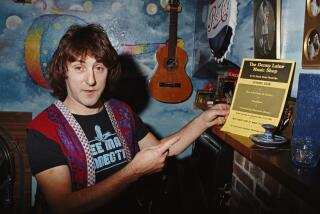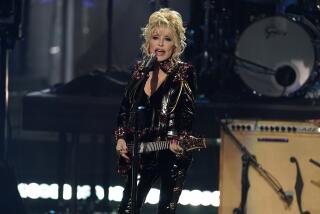Metheny Shows Mastery of Guitar’s Range
Guitarist Pat Metheny’s appearance at Royce Hall Sunday night provided convincing evidence of why he has such a diverse and dedicated following. Even within the relatively sparse and demanding context of a trio setting--always difficult for a guitarist--Metheny managed to offer a bit of something for everyone.
For the young players who view him as a guitar god, there were virtuosic displays galore. There’s no denying the speed and the efficiency of Metheny’s finger-popping technique, and he presented it with the ease of an instrumental master.
For the pure jazz fans, many of whom disdain his more electric efforts, there were a few acoustic-styled numbers demonstrating his strong connection to the Joe Pass/Jim Hall guitar lineage.
The rockers in the crowd reacted enthusiastically to the pieces in which Metheny cranked up the decibels and drove his sweeping, blues-inflected melodies across the bar lines. There were occasional moments in which the music drifted into New Age Impressionism. And--in a climactic number described by Metheny as “something new”--he unleashed his guitar synth into a roaring avalanche of metallic, noise-driven sounds reaching into the avant-garde arenas of both jazz and classical music.
In the midst of this display of eclectic musicality, Metheny mixed familiar items such as “Question and Answer” with an occasional number--Wayne Shorter’s “Capricorn” was a good example-- from his just-released album, “Trio 99>00.”
And for those familiar with Metheny’s larger group settings, it was fascinating to hear him working with the sole companionship of bassist Larry Grenadier and drummer Bill Stewart. The result was a strikingly pure vision of the essence of Metheny’s music, its fundamental elements laid bare.
Despite the compelling qualities of the music, the production itself left something to be desired. Scheduled to start at 7 p.m., it kept a capacity crowd confined to its seats--inexplicably besieged with what seemed to be the sounds of trains and locomotives from the speaker system--until the musicians finally arrived on stage at 7:25. Equally peculiar, the program’s lighting drifted back and forth from darkness through various shades of brightnessthat appeared to have no connection to the music being played.
Overall, they were surprising glitches in UCLA Performing Arts’ generally first-rate production values.
More to Read
The biggest entertainment stories
Get our big stories about Hollywood, film, television, music, arts, culture and more right in your inbox as soon as they publish.
You may occasionally receive promotional content from the Los Angeles Times.










